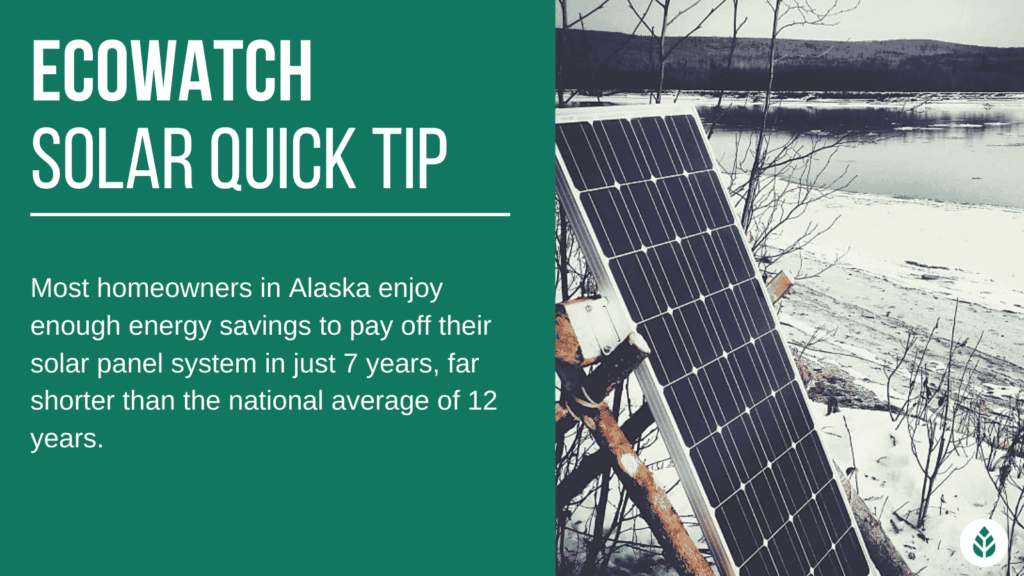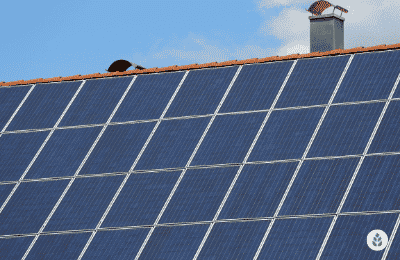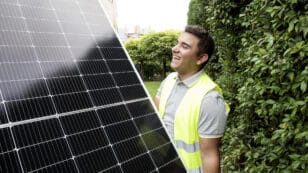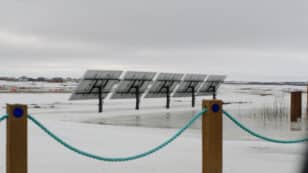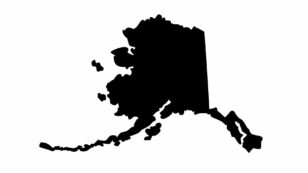
How Much Do Solar Panels Cost in Alaska? (2024 Savings Guide)
In this EcoWatch guide on the cost of solar panels in Alaska, you’ll learn:
- How solar panel costs in Alaska compare to the U.S. average
- What affects solar prices for Alaska residents
- How much you can save by going solar in Alaska
Each product and or company featured here has been independently selected by the writer. You can learn more about our review methodology here. If you make a purchase using the links included, we may earn commission.
Solar panels are usually well worth the investment in Alaska, as the typical system in the area pays for itself in just seven years and then saves over $41,943 on energy bills after that point. Of course, your panel payback period and net savings will depend on how much your system costs, which can vary quite a lot depending on a few key factors.
In this guide, we’ll explain the average solar panel cost in Alaska, talk about some factors that play a role in your pricing, some ways to save money when going solar in Alaska and more.
What Will Your Solar Panel System Cost in Alaska?
The average cost of solar panels in Alaska is $3.13 per watt. The standard solar array size required in the area is 6 kilowatts, which puts the average total installation cost at $18,780 before incentives or $13,146 after the federal investment tax credit (ITC) is considered.
Since solar energy systems are priced on a per-watt basis, the size of the system you need will play a major role in how much your system costs. The table below includes some typical system sizes for different home square footage and energy consumption, as well as the expected price.
| Solar Power System Size | Energy Use (per month) | House Size (sq ft) | Total Cost | Cost After the Federal ITC | Energy Savings (over 25 years, after system is paid off) |
| 3 kW | 300 kWh | 1,300 | $9,390 | $6,573 | $15,819 |
| 4 kW | 400 kWh | 1,500 | $12,520 | $8,764 | $21,092 |
| 5 kW | 500 kWh | 1,700 | $15,650 | $10,955 | $26,365 |
| 6 kW | 600 kWh | 1,900 | $18,780 | $13,146 | $31,638 |
| 7 kW | 700 kWh | 2,100 | $21,910 | $15,337 | $36,911 |
| 8 kW | 800 kWh | 2,300 | $25,040 | $17,528 | $42,184 |
| 9 kW | 900 kWh | 2,500 | $28,170 | $19,719 | $47,457 |

Arctic Solar Ventures
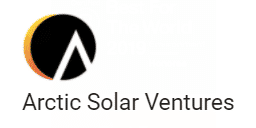
Local Service
Average cost
Pros
- Outstanding customer service
- Great warranty coverage
- Includes battery installations
Cons
- Limited brands of solar equipment available
- Slightly limited service offerings
- No leases or PPAs

Alaska Solar
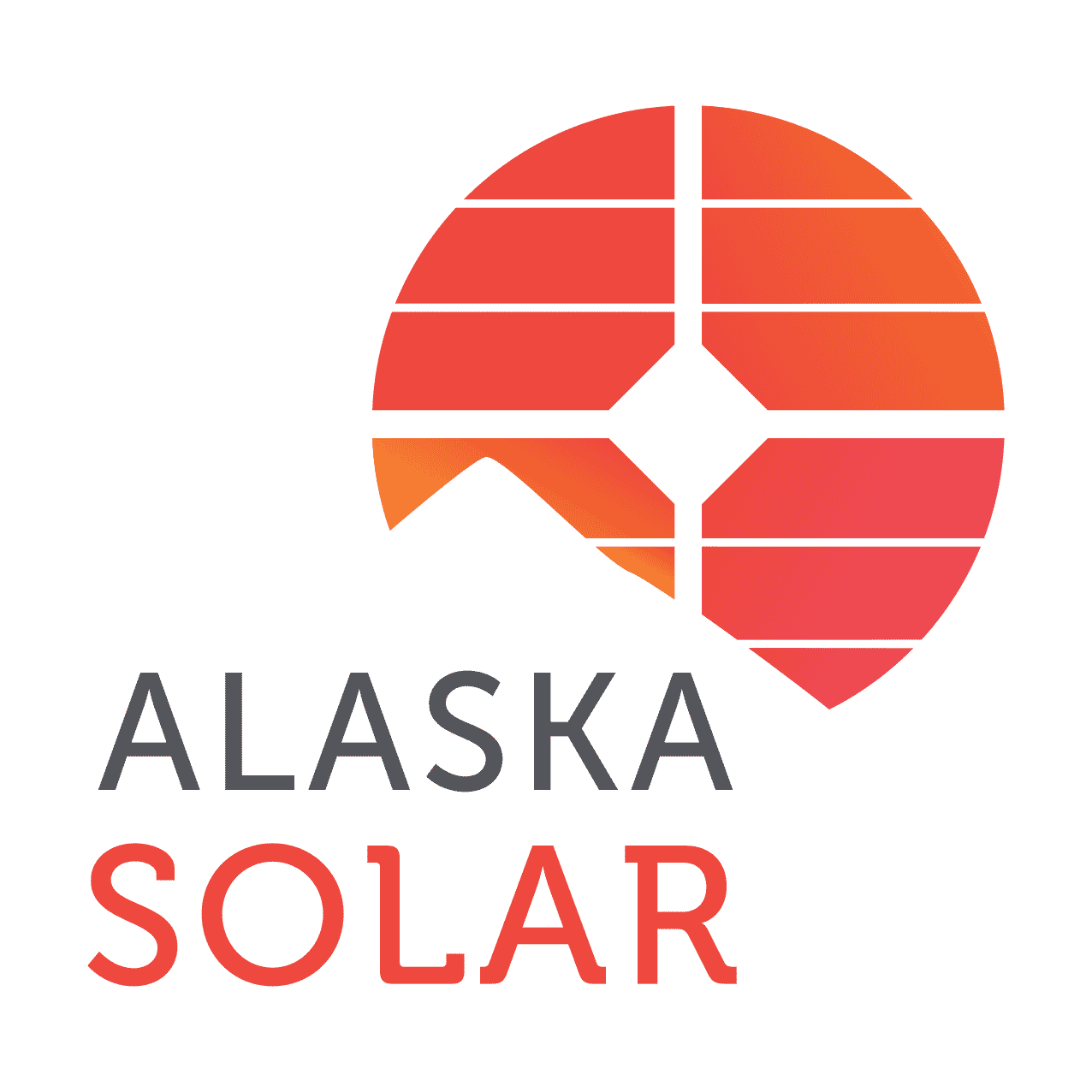
Local Service
Average cost
Pros
- Excellent reputation
- Outstanding customer service
- Includes battery installations
Cons
- Slightly limited service offerings
- Limited warranty coverage
- No leases or PPAs

Renewable Energy Systems of Alaska

Local Service
Average cost
Pros
- Expansive service area
- Great warranty coverage
- Offers products from leading manufacturers
Cons
- No leases or PPAs
- Less personalization than competitors offer
How Do Alaska’s Solar Prices Compare to the National Average?
On a per-watt basis, Alaska is the third most affordable place to go solar in the nation, with the average cost per watt in the area of $3.13 sitting well below the national average of $3.33. That means your money goes further in terms of watts per dollar.
Alaska residents also use significantly less electricity than most Americans. According to the Energy Industries Association (EIA), the average monthly consumption in the state is just 552 kilowatt-hours (kWh), much lower than the U.S. average of 881 kWh. Lower energy consumption means smaller systems are generally required to offset energy demands.
As such, Alaska residents typically need a 6 kW system, which is two-thirds of the U.S. average of 9 kW. Not only does your money go further on a watt-per-dollar basis, but your overall investment is going to be much lower in AK than the average in the country.
The typical total system cost in Alaska before the federal credit is around $11,000 less than what most Americans pay — $18,780 compared to $29,970 — and the total after the credit is more than $7,500 lower — $13,146 compared to $20,979.
What Are the Main Factors of Solar System Costs in Alaska?
There are three main factors that contribute to Alaska’s solar power system costs. These include the following:
- The below-average energy consumption in Alaska
- The outstanding net metering program in Alaska
- The minimal sunlight available in Alaska
We’ll explain why these factors matter and how they affect your system pricing in the following sections.
The Below-Average Energy Consumption in Alaska
As mentioned above, Alaska homeowners use around two-thirds of the electricity per month that most Americans do and have the third-lowest consumption rate in the nation.
That means homeowners can usually get away with much smaller solar array sizes and still be able to offset their consumption. Smaller array sizes are naturally less expensive, on average, since you’re paying for fewer kilowatts. Even if the per-watt price was the same in Alaska as it was in most states, the three-kilowatt difference in system size required would still equate to savings of over $9,000.
We do still recommend oversizing your system a bit to compensate for the long periods of minimal sunlight or no sunlight in Alaska. However, the solar savings should still be substantial, even with this adjustment.
Alaska’s Excellent Net Metering Program
Net metering is a solar incentive available in many states that lets you overproduce energy with your system and “store” it for later. In actuality, you send the excess energy to the grid and earn credits per kWh you export. When your system fails to meet your energy needs — like at night or on cloudy days — you can use your credits to get free or discounted energy from the grid.
Alaska’s net metering program is outstanding, as the regulatory body in the state requires that every exported kWh be credited at the full retail rate, which means you can use one free kWh for each one you send to the grid. In areas without net metering, solar batteries are typically recommended, as they provide similar perks.
Thankfully, batteries aren’t typically necessary in Alaska. Since batteries cost around $10,000 to $12,000 each, the average system costs in the state remain lower than they would in an area without net metering or with a less appealing net metering policy.
The Low-Sun Conditions in Alaska
Alaskans see an average of just 121 sunny days per year, which is one of the lowest in the country and only a little more than half of the U.S. average of 205 sunny days. In areas where sunlight is minimal, high-efficiency photovoltaic (PV) panels are often required to make the most of the sunlight that is available.
In Alaska, it’s more crucial than anywhere else in the nation to maximize your panel efficiency and solar production to compensate for the lack of sunlight. That means our top recommendation is something like Maxeon panels, which have the highest efficiency rating of any panel brand.
High efficiency ratings mean higher prices per watt, which does drive up the average system cost in the state. Still, these panels are well worth the investment, in our opinion, and will lead to the highest energy savings in the long run.
Watch Below: See What An Off Grid Solar Installation Looks Like in Snowy Alaska
Additional Costs of Going Solar in Alaska
Most of the system costs in any area will be largely made up of the cost of panels and major add-on products, like solar batteries and electric vehicle (EV) chargers. However, there are some other smaller costs you should be aware of, as they can add up to hundreds or even thousands of dollars. We’ll explain most of these additional costs below.
- Product markup and administration fees: Every solar installer in Alaska will charge different prices for the equipment they install, and some will mark up the cost of that equipment to increase profit. Additionally, some installers charge additional fees for administrative services, like filing for permits, Alaska solar incentives and rebates for you. In most cases, these charges add up to a few hundred dollars.
- Building permits: Building permits are required in all cities in Alaska before your solar PV panels can be installed and connected to the grid. Permit costs vary based on the fee schedule from your local building department, but most cost between $100 and $400 in Alaska. This fee is typically paid by your installer but passed to you on your invoice.
- Interconnection fees: All electric companies in Alaska will require that you or your installer file an interconnection application before connecting your panels to the grid and activating them. Interconnection is required to enjoy net energy metering (NEM), and the application fees usually total between $50 and $150 in AK.
- Additional solar equipment: Panels and batteries make up the bulk of your equipment costs, but some installers charge separately for the other equipment needed, like mounting racks, inverters, wiring and conduit to run your wiring across your roof. Most Alaskans also invest in snow guards and squirrel guards. All of these components can add up to a few hundred dollars.
What Maintenance Costs Can Solar Owners Expect in Alaska?
For the most part, solar panel maintenance isn’t something you really have to worry about in Alaska. Any major issues with your panels that require repair or panel replacement should be covered by your solar warranties as long as you choose a reputable Alaska solar installer.
Some homeowners pay for panel cleaning services, which remove debris from the panels’ surface that can reflect sunlight and cause a dip in production. The dip is minimal, and the abundance of rain and snow in the area should naturally keep your panels clean. Cleaning only costs around $125 per service, but we don’t believe it’s necessary at all in Alaska.
Which Solar Financing Options Will Help You Save the Most in Alaska?
There are four main ways to pay for your solar project in Alaska: a cash purchase, a solar loan, a solar lease or a power purchase agreement (PPA). Not all installers offer all of these, but there are companies throughout the Last Frontier that do provide access to all four options.
A cash purchase is the best option, in our opinion. You will pay the highest initial costs, which means it’s the least realistic and least accessible option. However, you’ll own your panels right away, which means a few important things.
First, panel ownership means that you can take advantage of the federal solar tax credit, which holds an average potential value of $5,634 in Alaska. Second, immediate ownership means you won’t pay any interest, so your breakeven timeline will be as short as possible, and your overall system price will be as low as possible. All of this translates to the highest energy savings over time of any financing option.
A solar loan is more realistic for most customers and what we consider the second-best option. A loan usually requires no down payment, which means they’re super accessible. Loans also lead to panel ownership, so you will still be able to take the federal credit.
However, the interest you’ll pay on your loan will reduce your savings and extend your panel payback period a bit.
Leases are rental agreements for your panels that give you access to the energy they generate to save money each month on your utility bills and energy costs. Leases have no initial costs and low monthly costs, so they’re highly accessible.
However, you’ll never own your system with a lease, so your long-term savings will be significantly lower, and you’ll miss out on the federal tax credit.
A PPA is an agreement where your panels get installed at no cost to you, and you agree to buy energy at a discounted rate from your panel installer. This is a low-cost way to support the sustainable energy movement and take advantage of solar as a renewable energy source, but it saves the least amount of money over time and doesn’t give you access to the ITC.
Leases and PPAs are usually not in our recommended options, but this is especially the case in Alaska. A loan is far more beneficial, has similar upfront costs, and usually has lower monthly costs due to the limitations of leases and PPAs and the high electric bills in the area.
If you’re not sure which options will work for you, we recommend getting some quotes from SunPower and Tesla. Most of the local companies don’t accept leases or PPAs, but these two national providers service Alaska and accept all four financing options. Each provider can help you decide which option will suit you best.
Alternatively, you can use our solar calculator to find out what your system will cost and then decide which option is the most beneficial and still fits into your budget. The table below should help you prioritize the payment options based on upfront costs and benefits over time.
| Financing Method | Total 25 Year Savings (estimated) | Initial Costs (estimated, after the federal tax credit) | Monthly Payments (estimated) | Payback Period (estimated) |
| Cash | $41,943 | $13,146 | $0 | 8 years |
| Loan | $36,000 | $0 | $60 – $175 | 12 years |
| Lease | $5,000 | $0 | $125 | N/A |
| PPA | $4,000 | $0 | $125 | N/A |
What Are Other Ways You Can Save When Going Solar in Alaska?
Even though solar arrays are less expensive in Alaska than they are in most states, paying $10,000+ for a system is still expensive in terms of non-essential home improvements. As such, most Alaskans look for ways to save money on their solar conversion costs. There are a few things you can do to keep costs down, including the following:
- Consider solar batteries carefully
- Choose a high-efficiency panel brand
- Take advantage of Alaska solar perks
We’ll explain how and why these strategies will likely save you money in the following sections.
Consider Solar Batteries Carefully
As we mentioned above, Alaska has a stellar net metering program that requires your electric company to credit you for all excess solar energy you generate at the full retail rate. Solar batteries are a great investment in areas that don’t mandate net metering or have a credit rate that’s well below the retail value.
Batteries can still be helpful in Alaska since the state sees power outages very frequently, and batteries can let you maintain power off-grid through those blackouts. However, they won’t pay for themselves or bump up your savings due to the net metering policy in place.
We generally don’t recommend batteries unless you want to avoid power outages, as they add $10,000 or more to your costs and provide no financial benefit.
Invest in a High-Efficiency Panel Brand
Alaska sees the fewest sunny days per year of any state in the country, and its northern location means the sunlight that does hit panels in the area is often lacking in intensity. Ultimately, that leads to lower production and fewer savings.
A good way to combat this and maximize your savings over time is to choose a high-efficiency panel brand for your array, like Maxeon. Maxeon panels will be more expensive than most upfront, but over time, they’re likely to pay for themselves and provide more savings than most other brands.
Take Advantage of Alaska’s Solar Incentives
Finally, you can effectively save money by taking advantage of all of the solar benefit programs that are available in the state.
Perhaps most importantly, all taxpayers in Alaska have access to the federal solar tax credit, which provides a credit to your income taxes totaling 30% of your system costs. That’s an average potential savings of over $5,600 in Alaska.
There’s also a statewide sales tax exemption, as well as local perks available from some utility companies, including Golden Valley Electric Association, Alaska Power & Telephone and Chugach Electric. You can check out our guide to Alaska’s solar incentives for more information.
What Are the Typical Costs of Alaska’s Solar Installers?
The installation company you choose for your solar project in Alaska will play a role in your overall system cost, as each company charges different prices for labor, equipment and administrative work.
The table below includes a quick look at some of the best solar companies in Alaska and how they compare in terms of pricing and more. This should help you decide which of these installation companies are likely to fit into your budget.
| Solar Company | Superlative | EcoWatch Rating (Out of 5.0) | BBB Rating | Average Price ($–$$$$$) |
| SunPower | Best National Provider | 5 | A+ | $$$$ |
| Tesla | Best Technology | 4.5 | A+ | $$ |
| Arctic Solar Ventures | Best Local Installer | 4.5 | A+ | $$$ |
| Alaska Solar | Best Customer Service | 4 | N/A | $$$ |
| Renewable Energy Systems of Alaska | Best Warranty Coverage | 4 | A+ | $$$ |
How Are Solar Costs and Regulations Trending In Alaska?
According to the Solar Energy Industries Association (SEIA), solar equipment today costs around half of what it did in Alaska ten years ago. With a price drop of 54%, the average system that costs around $13,146 after the federal credit today would have totaled over $26,000 a decade ago.
The drop in pricing is likely due to a more aggressive rate of solar adoption in Alaska, as panels have recently caught up to production demands in the area in terms of efficiency. Additionally, the manufacturing process has gotten much more streamlined and efficient, which brings down production costs.
Since solar is still growing in popularity and advancements are still being made in manufacturing, we expect the price to continue to go down in the future.
As far as solar perks and regulations go, we don’t foresee many changes in the coming years. The state has a solid renewable portfolio standard (RPS) goal set, but the deadlines are quite far out — 25% renewable energy by 2027, 55% by 2035 and 80% by 2040. It’s more likely that new benefit programs will pop up as we approach those deadlines, but for now, the current perks seem to be keeping the adoption rate quite high.
With prices lower than they ever have been and perks going strong for the foreseeable future, now is a better time than ever before to adopt solar in Alaska. You can take advantage of historically low prices by getting quotes from reliable installers in your area now using the tool below.
Read More About Going Solar
- What Are the Best Solar Installers in Alaska?
- Is Solar Worth it in Alaska?
- Does Alaska Have Solar Incentives?
The cost information presented in this article is derived from a comprehensive analysis, incorporating data from multiple industry sources. The average cost per watt per state was calculated based on figures from Consumer Affairs, Energy Sage, and Berkeley Lab’s Electricity Markets & Policy Department. Additionally, monthly energy consumption and the average monthly cost of electricity were sourced from the U.S. Energy Information Administration, ensuring a well-rounded and accurate representation of the information presented.
FAQs: Alaska Solar Panel Costs
Given how popular solar has become in Alaska, we get questions regularly about the costs of systems in the area, how much they’ll save and more. We’ll answer some of the questions we see most often below.
Despite the lack of sunny weather and the northern location of Alaska, solar is an outstanding investment in the area and provides greater savings than in most other states. The average solar array in the area is around $11,000 less than what most U.S. residents pay. Plus, the system is expected to pay for itself in just eight years — far faster than in most states — and then save an additional $41,943, on average. Overall, Alaska is one of the best places in the U.S. to convert to solar.
Yes, there are several solar benefit programs available in Alaska. Most importantly, all residents can take the tax credit provided by the federal government, which can potentially save 30% of your system cost, or $5,634 on average in AK. There isn’t a property tax exemption or a state tax credit, but residents have access to a statewide sales tax exemption, a stellar net metering program and a myriad of local tax incentives and solar rebates available from local utility companies.
Yes, solar panel installation is not only available in Alaska, but photovoltaic (PV) systems also provide some serious financial benefits. There are only a handful of solar companies in the state, but most residents can get panels installed by a professional and enjoy tens of thousands of dollars in savings on electricity costs after the system pays for itself.
Related articles
Comparing authorized solar partners
-
- Outstanding customer service
- Great warranty coverage
- Includes battery installations
- Limited brands of solar equipment available
- Slightly limited service offerings
- No leases or PPAs
A+Outstanding Local Installer
Having trouble deciding? Click below and use our process to receive multiple quotes instead:

 233k
233k  41k
41k  Subscribe
Subscribe 
